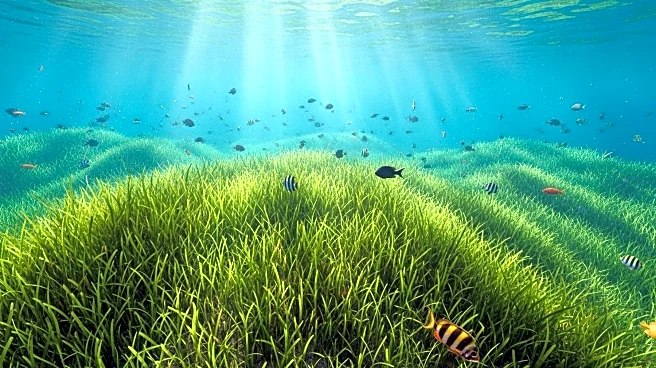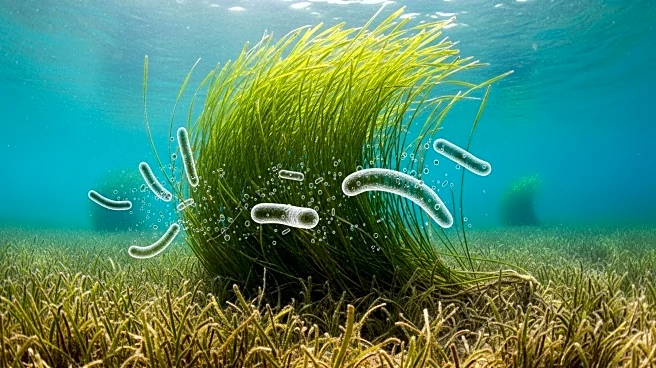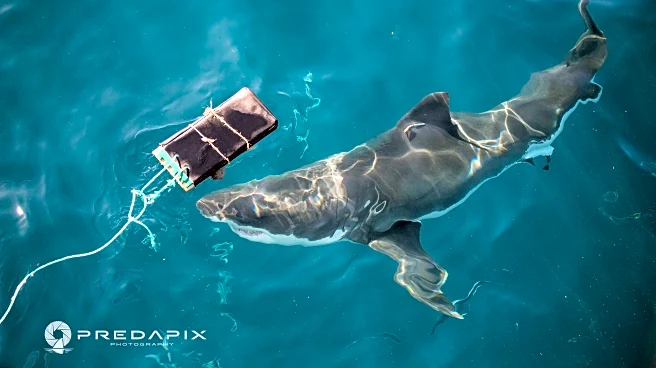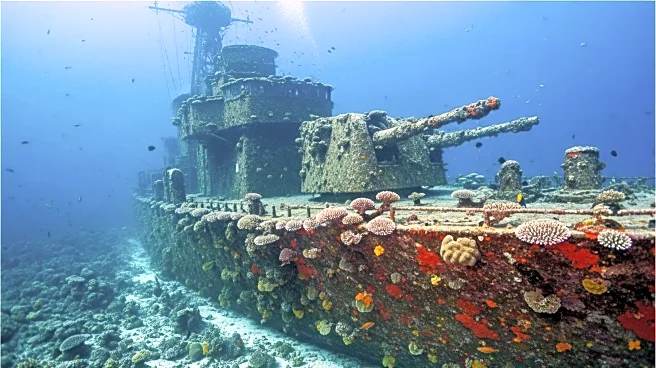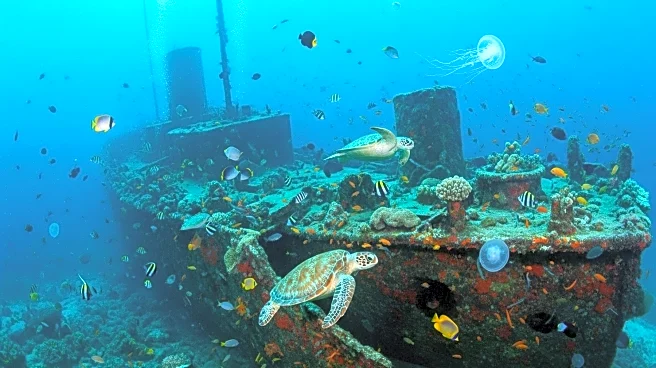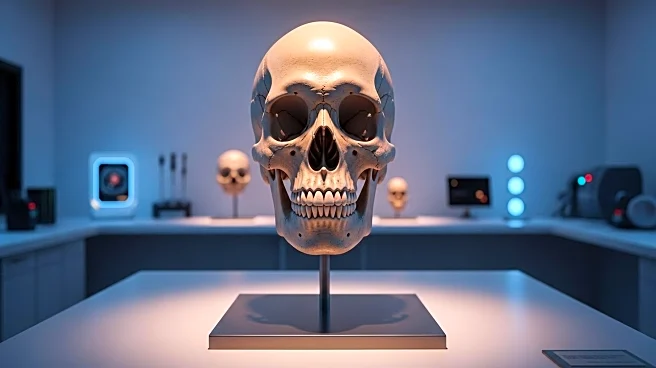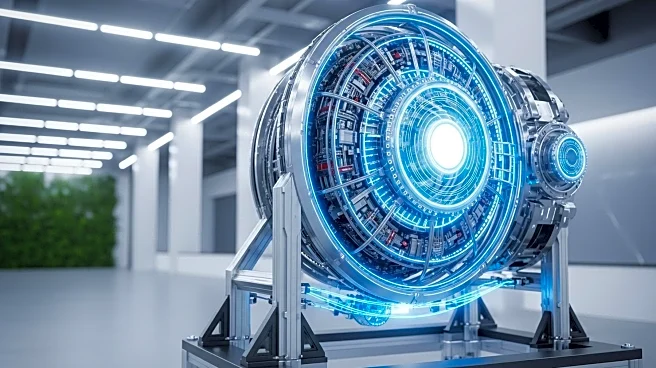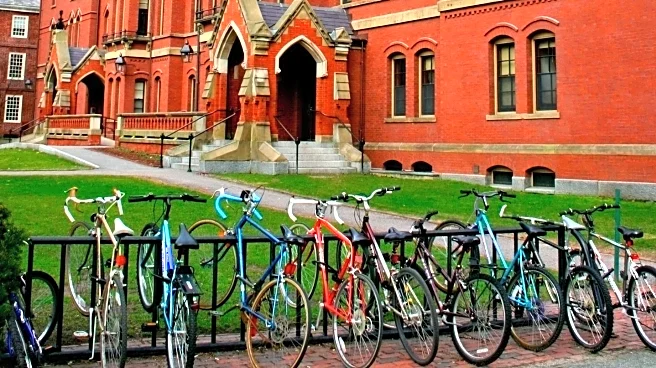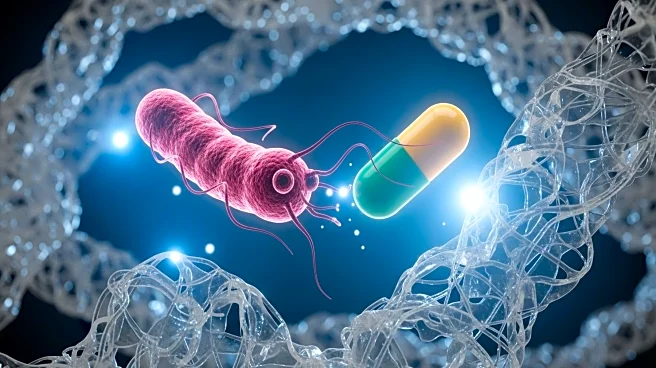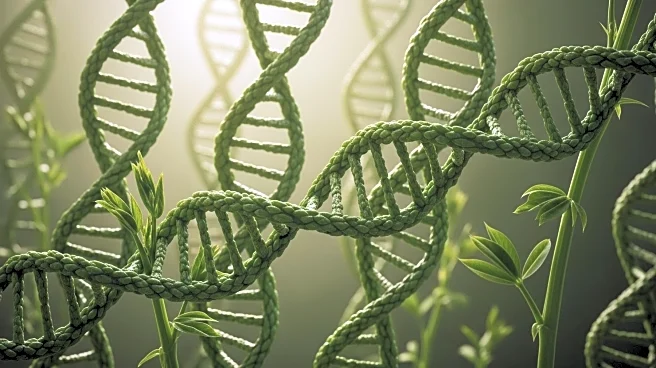What's Happening?
A study conducted by the University of Liège at the STARESO marine research station in Calvi, Corsica, has highlighted the significant impact of transplantation methods on the microbiome of Posidonia oceanica seagrass meadows. These underwater ecosystems, crucial for stabilizing seabeds and storing carbon, are under threat from human activities and climate change. The research focused on the microbiome associated with the roots of these plants, which is essential for their survival. The study tested three transplantation techniques: metal staples, coconut fiber mats, and potato starch structures. It was found that metal staples, which allow direct contact with sediment, promote the establishment of beneficial bacteria crucial for sulfur and nitrogen cycles. This discovery emphasizes the need to consider microbiological factors in restoration efforts.
Why It's Important?
The findings of this study are significant as they offer a new perspective on the restoration of seagrass meadows, which are vital for marine biodiversity and carbon storage. By understanding the role of the microbiome in plant resilience, restoration efforts can be more effective and sustainable. This research suggests that simply replanting seagrass is insufficient; the health of the microbiome must also be ensured. This could lead to new restoration techniques, such as inoculating beneficial bacteria or designing substrates that enhance root-sediment interaction. The study's insights could improve the success rates of seagrass restoration projects, which are critical in combating the effects of coastal urbanization and climate change.
What's Next?
The study opens up new avenues for enhancing seagrass restoration techniques. Future efforts may focus on incorporating microbiological considerations into restoration strategies. This could involve developing methods to inoculate seagrass with beneficial bacteria or creating substrates that facilitate better root-sediment interactions. These advancements could significantly improve the resilience and survival of transplanted seagrass meadows. Additionally, the research may prompt further studies into the microbiome's role in other marine and terrestrial ecosystems, potentially leading to broader ecological restoration applications.
Beyond the Headlines
The study underscores the complexity of ecological restoration, highlighting the need to consider both visible and invisible components of ecosystems. The role of microorganisms in ecosystem health is gaining recognition, and this research contributes to a growing body of evidence that microbiomes are integral to plant and ecosystem resilience. This could lead to a paradigm shift in how restoration projects are approached, emphasizing the importance of microbial health alongside traditional ecological factors.

